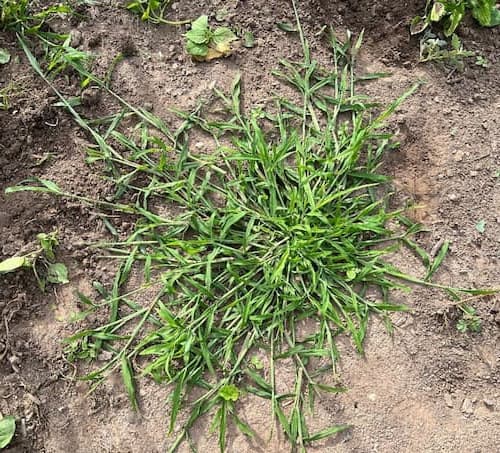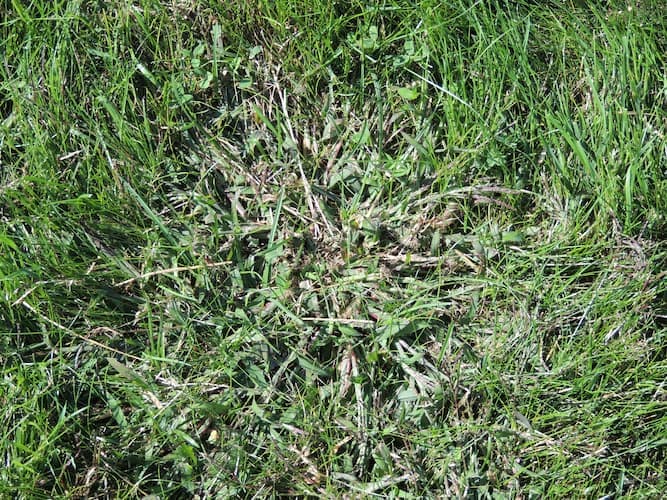How to Control Crabgrass in the Lawn and Garden

About Crabgrass Weeds
Crabgrass plants are one of the most common weeds in lawns, gardens, and fields around the world. To many, but not all people, crabgrass is an aggressive and invasive weed. Ask any homeowner. They will tell you that crabgrass is a tough plant to eliminate from lawns. The plants are found in a wide range of climates, soils, and weather conditions. Given the right conditions, it thrives and pushes out other plants. It grows fast with little competition. A bald spot on the lawn or a flower or vegetable garden are perfect places for it to grow quickly. Controlling crabgrass is a little easier in flower and vegetable gardens, where a shovel or a hoe can quickly dispatch this unwanted weed. Also, a thick layer of garden mulch is a good deterrent.
Other Names: Finger Grass, Fonio, and Hairy Crabgrass.
Plant Color: Pale green, lighter than other lawn grasses.
Soil Ph: 5.5 – 7.5
Botanical Name: Digitaria
Is Crabgrass Edible?
Surprisingly, this plant is indeed edible. And, it is actually cultivated in some areas, most notably Germany and Poland where it is considered a grain crop. The seeds are milled and used as flour. An internet search results in several crabgrass recipes for you to savor. Also, it is used as fodder for farm animals. So, crabgrass isn’t always considered a bad thing.
This plant also has medicinal applications. Most notably, it is used as a home remedy for the treatment of cataracts.
Varieties of Crabgrass
This plant is found all over the world. There are several varieties, including:
- Southern Crabgrass – This is one of the most common varieties and is native to the U.S.
- Asian Crabgrass – This is the second most common variety. As its name suggests, it is native to Asia.
- India Crabgrass
- Texas Crabgrass
- Blanket Crabgrass
Crabgrass Propagation
Crabgrass is propagated from seeds. It is a very prolific seed producer. One plant can produce up to 150,000 seeds! As a result, it is important to remove or kill the plants prior to seed production. The seeds generally fall near the mother plant. However, birds and animals contribute to the spread of seeds across your lawn. Your lawn mower also spreads them.
The seeds remain dormant over the winter months. They sprout in the early spring as the soil warms up. An application of fertilizer with crabgrass preventer does not kill the weed. Rather, it does what the product name suggests. It stops the seed from sprouting. However, the seeds often sprout weeks after application.

How to Control Crabgrass in Lawns
Here are several ways how to control crabgrass and other weeds, too:
Mowing the lawn at a higher height helps to prevent weeds from successfully taking root.
Thick, healthy lawns make it more difficult for weeds to gain a foothold in your lawn.
Pre-emergent herbicides, usually sold as lawn fertilizer with Crabgrass Preventer, are effective in the spring to keep the seeds from emerging.
Cornmeal is an organic pre-emergence weed control. It prevents weed seeds from sprouting.
Pulling the weeds by hand is effective. It works well if only a few weeds are present. Get as much of the roots as possible. Importantly, remove the weeds before the seeds form and drop into the soil.
Apply a thick layer of mulch in flower and vegetable gardens.
Additional Resources
People who like this article will also like:
More about Weeds – Certainly as gardeners know, there’s no shortage of weeds in the home garden.
Please support our site. Shop for:
- rmmatthews100@hotmail.com
- 585-721-6528
- Rochester, NY
©1999-2024 GardenersNet.Com, All Rights Reserved

